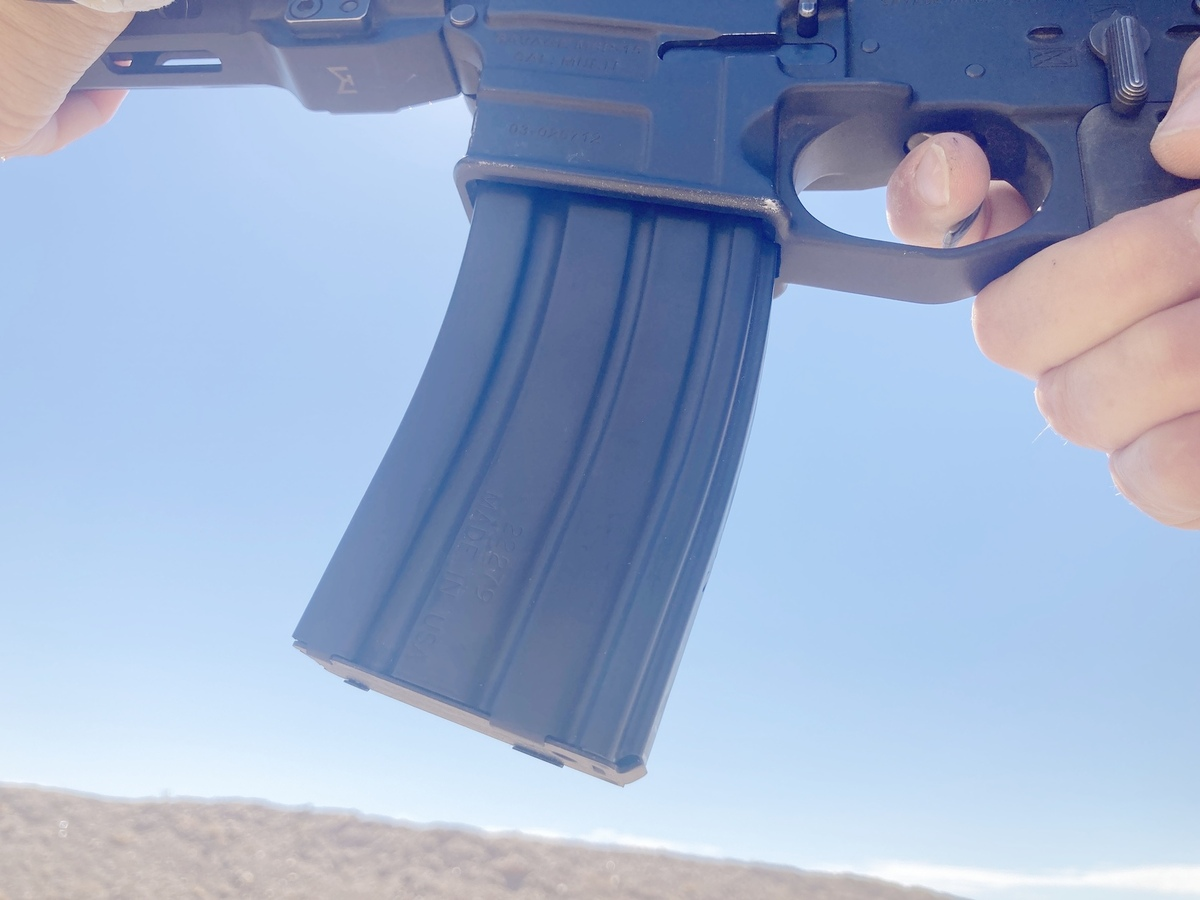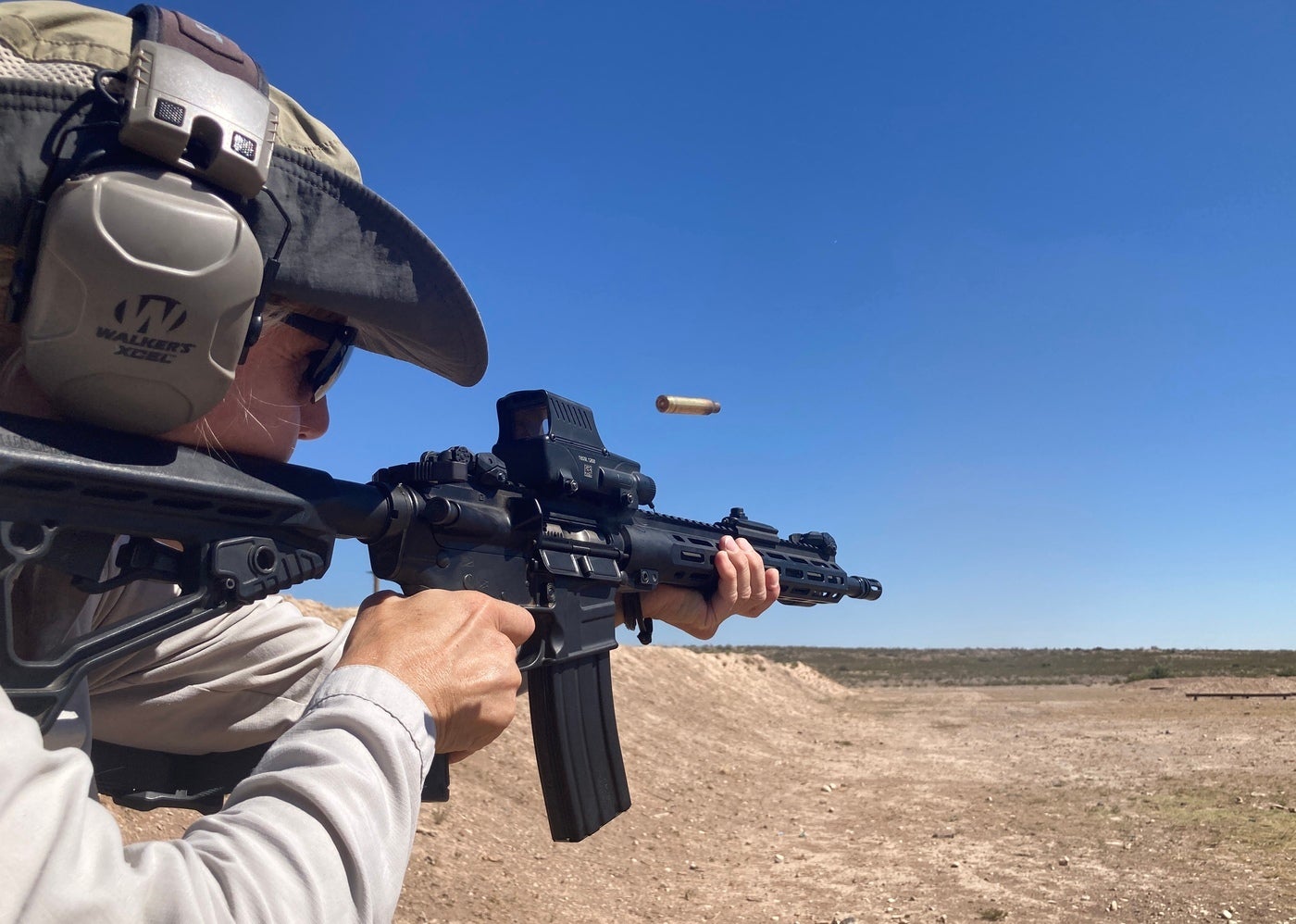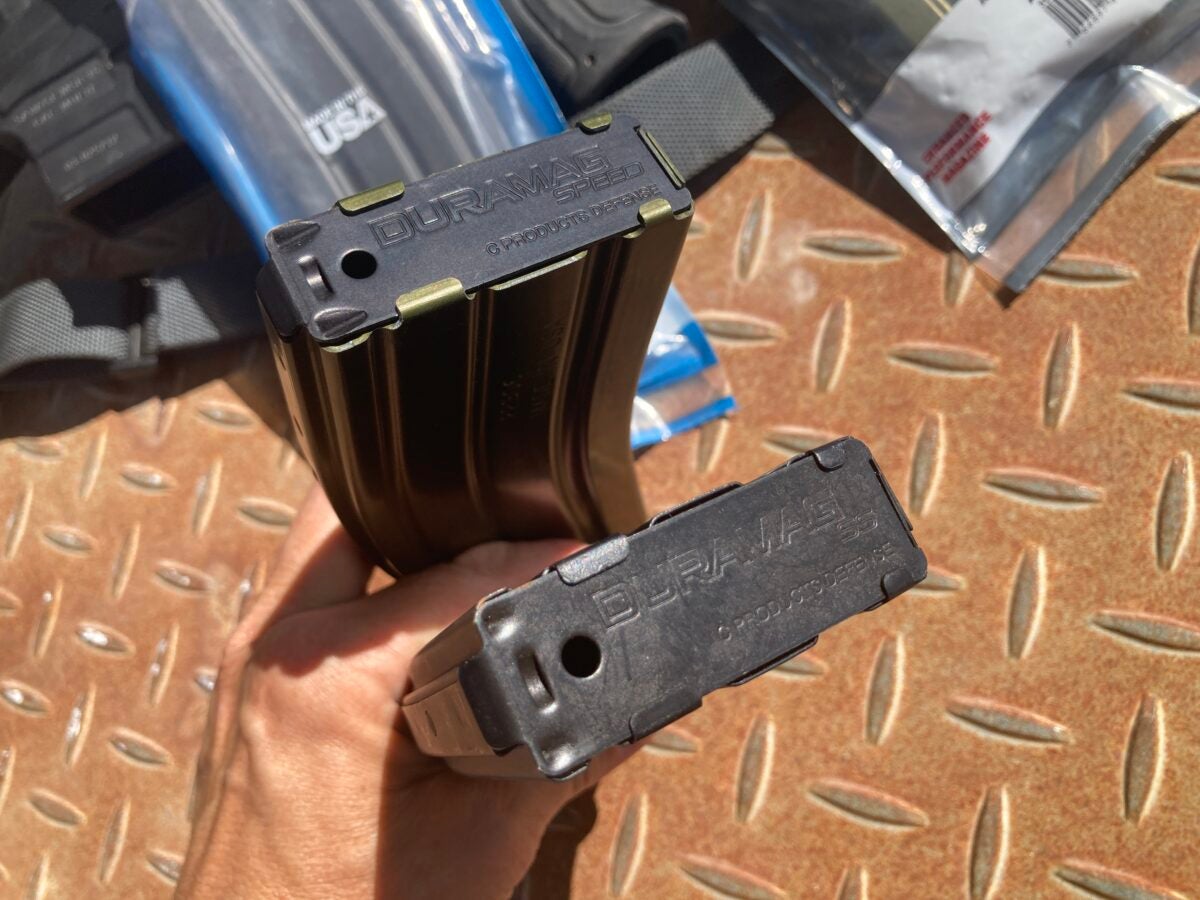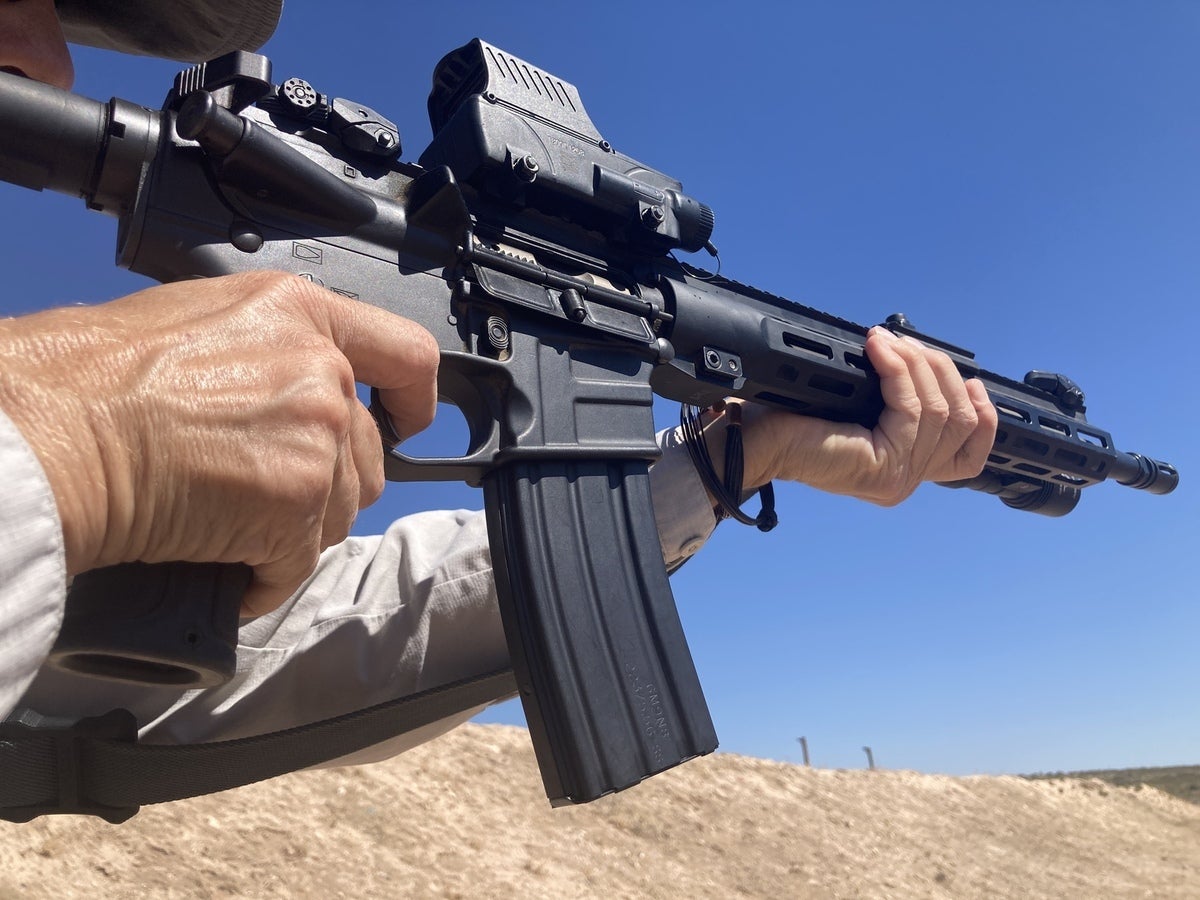AllOutdoor Review – DuraMag AR Magazines in Stainless, Aluminum
Eve Flanigan 07.27.23
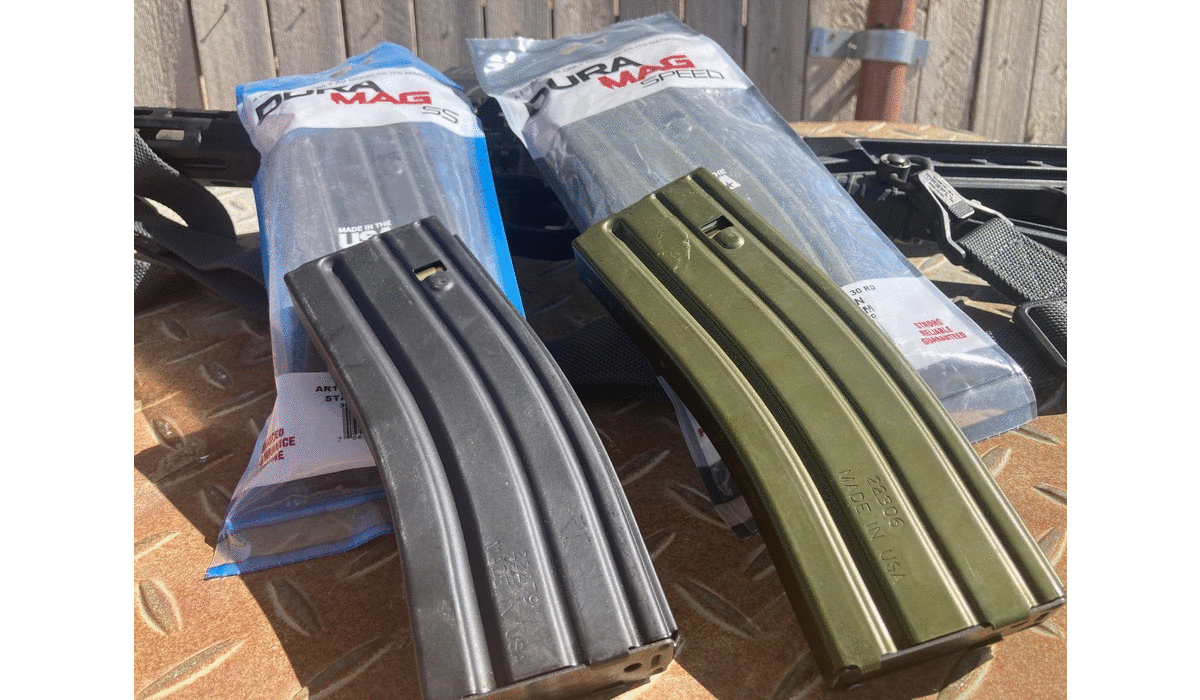
A universal need for enjoying guns is keeping them well-fed and operating smoothly. And in the .223 Remington/5.56 NATO class, there are numerous choices of magazines to help meet that need. Recently I’ve been testing a pair of new mags with retro design, made by DuraMag. The company produces metal mags for AR-platform rifles in numerous chamberings, common and not. They also manufacture magazines for 9mm 1911 pistols and the Ruger LCP .380. DuraMag is on a mission to bring polymer mag users back to the traditional side, keeping science on their side.
Before getting into the experiential part of this test, it’s worth taking a look at the layperson-friendly “why,” offered on the DuraMag website, on metal versus polymer magazines. It’s obviously available for anyone to read, so I’ll do my own extremely non-scientific take. According to DuraMag, polymer is at risk for cracking or swelling resulting in unreliable performance in extremely hot or cold weather. These problems can become evident quickly when running heavier bullets and/or subsonic ammunition. The solution? Materials that don’t change at a molecular level along with the temperatures on our planet. “Some things should never be plastic” is a slogan at DuraMag, where “Better in Metal” is a tenet.
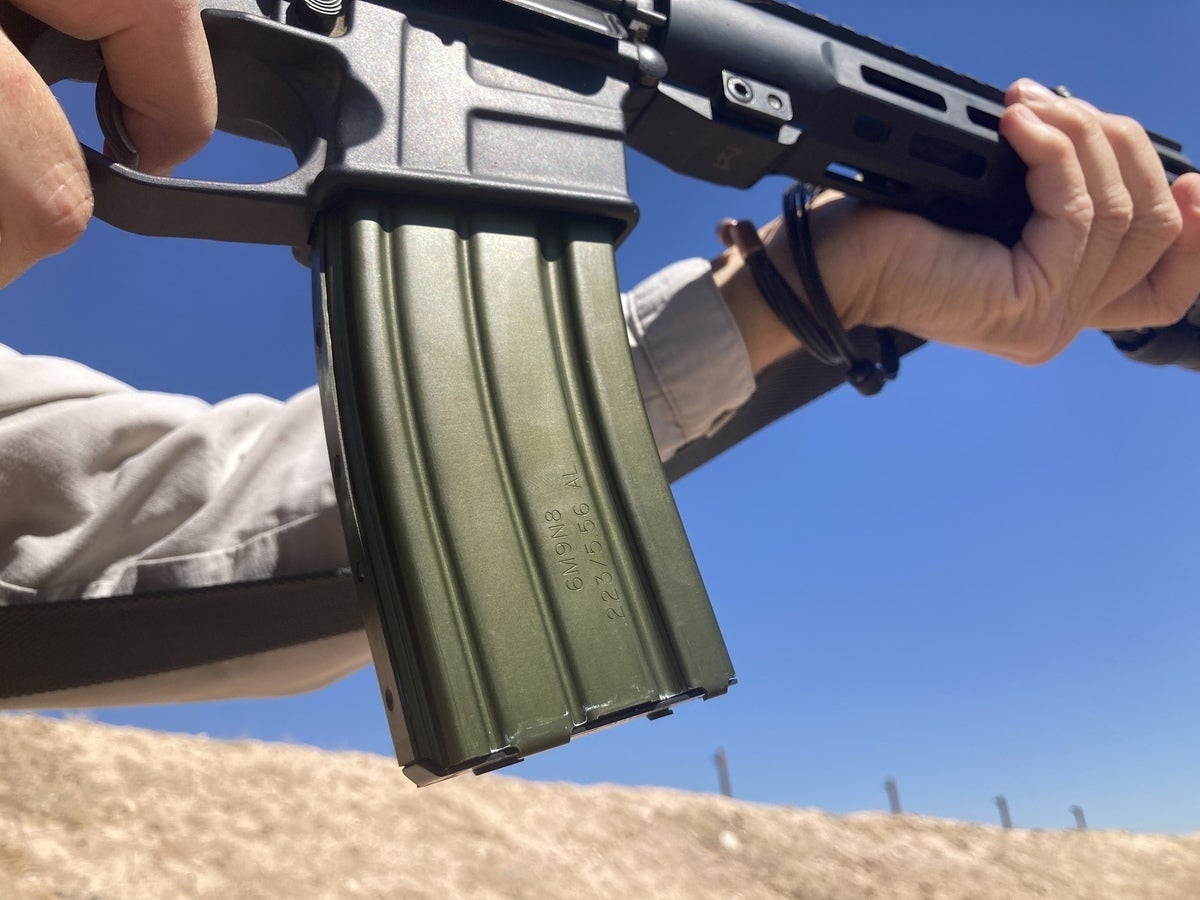
For this review, the company supplied samples of their steel and aluminum magazines, in two colors, both in 30-round capacity, though other sizes are available. I loaded them full and into my AR, feeding the first round several times to confirm reliable initial feeding when full. That process was repeated with 10-20 rounds in both magazines. I fired 20 rounds from each rapid-fire (ammo is, after all, not free), and fired at a slow pace also. The test rifle is my now-discontinued Savage MSR Recon .223 Wylde.
Looking at the DuraMag SS (stainless), it bears the appearance of Colt M4 magazines. It’s matte black, finished with the company’s trademarked protective coating, T-360. It also coats the inside of the mag. Unlike those old Colt standbys, the DuraMag’s follower never shifts like a boat on tossing waves. Their Advanced Geometry Follower is purported to be tilt-free, and I never experienced it doing anything but staying level during loading or drop testing on concrete. Likewise the “Liplock Technology” of the feed lips kept rounds exactly where they belonged, even when I dropped the mags from five feet, open end down. After the shooting and drop tests, plus riding around in my range bag (a rather chaotic place), the finish shows no scratches or chips, just small random marks that are, if you will, more matte-like than the rest of the coating. These aren’t visible except within arm’s length.
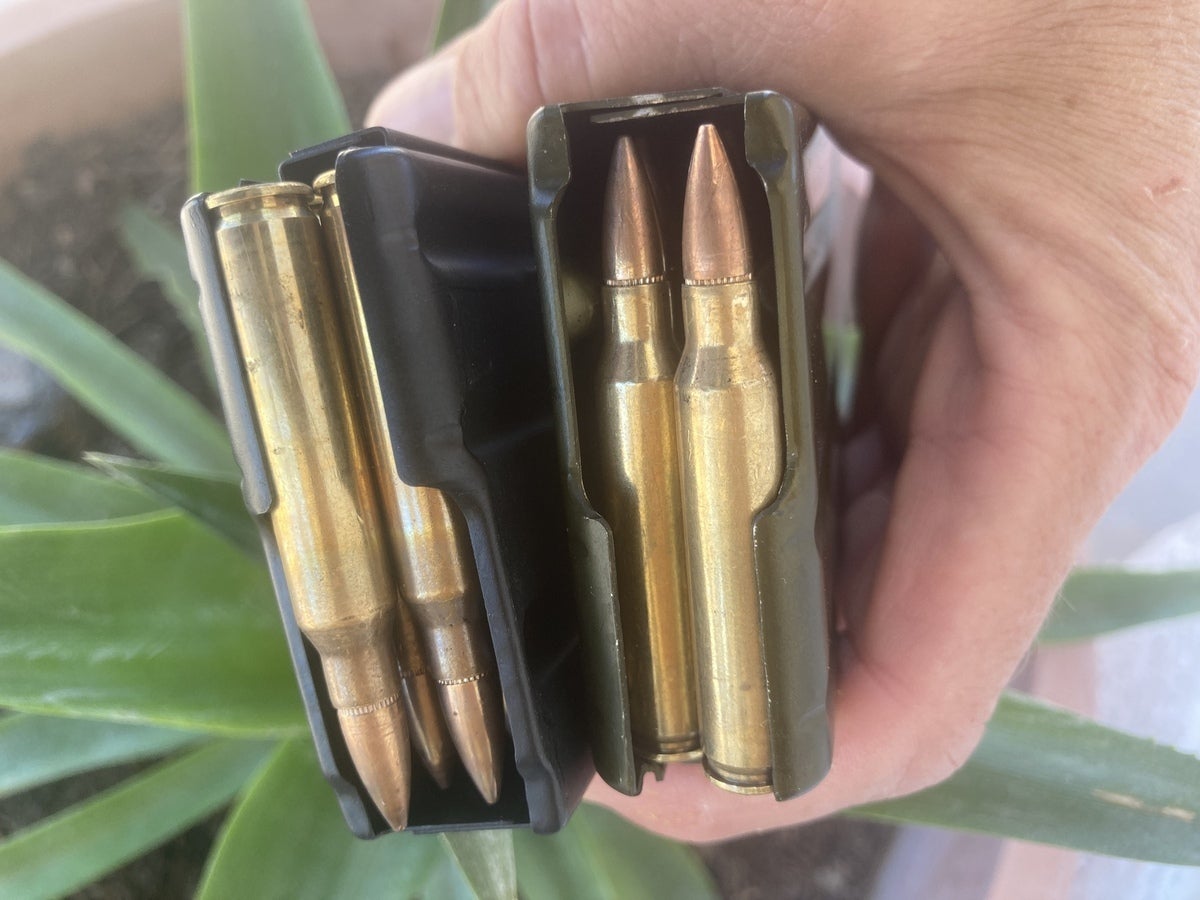
The T6 aluminum DuraMag Speed underwent the same test. This olive drab mag is palpably lighter than the SS model. It performed as promised, with perfect feeding and consistent bolt lock-back when it ran dry. The Speed sprouted a tiny but feel-able point on one corner after several drops (see photo), but had no other damage and continued feeding well. T-360 coating is also used in this magazine.
In addition to the features above, the toughness and consistent performance of these mags is ensured by spring and wall construction. The trademarked EverFlex spring maintains predictable tension. DuraMag literature states that storing their mags loaded, indefinitely, will not wear out the springs. Then there’s case construction. Another trademarked process called Post & Hole Construction ensures the robotically welded mag body can’t expand or contract. These mags, especially the SS model, are well-suited for extreme conditions and custom loads.
As a former biathlon competitor, I’m aware of how much difference a little bit of extra weight adds to the effort of trekking miles with gear. With an aluminum DuraMag in one hand and stainless in the other, t’s impossible not to notice the Speed model is lighter than the SS. I got curious and compared not only their weights, but also the polymer and classic aluminum models I have. Here are the results, at least according to a kitchen scale:
- Mag Type (30 Round Capacity) – Weight (Ounces)
- DuraMag SS – 6.0
- DuraMag Speed – 2.5
- Vintage Colt Aluminum – 3.0
- Competitor’s Polymer – 4.0
I was surprised that the vintage magazine came in as light as it did, but it’s clear that for competition use or anywhere weight is a concern, the SS prevails. And while the SS doesn’t feel heavy in the hand, its stout construction contributes to it being the heaviest of this sampling.
DuraMags are available for most popular AR platform chamberings, making it easier to feed, for example, your .458 SOCOM or .350 Legend. The SS is offered in 5, 10, 20, and 30 round capacities, in black with black or orange follower, or choose flat dark earth in the 30 round category. The Speed mag is available in 20- or 30-round capacity, in black, gray, pink, blue, red, bronze, OD green, or desert gold. Black models have an optional orange follower. Prices range from $17.20 to just under $20 by direct order, depending on options. They are made in the USA.
